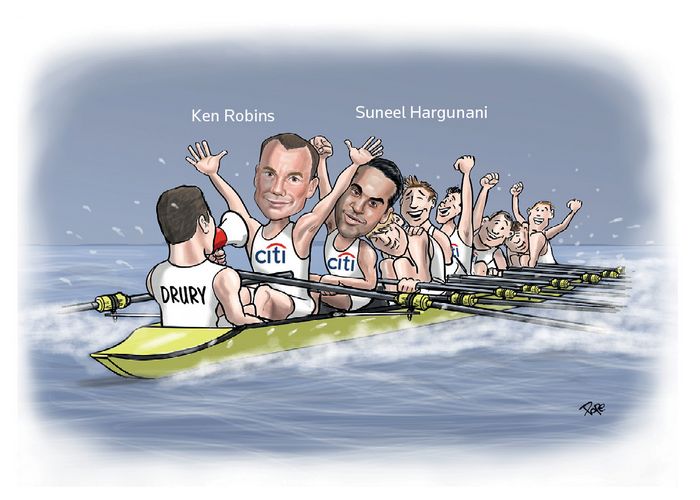Doubling up
Citigroup doubling its workload in a year without any negative impact on execution was remarkable. As the global coordinator of choice Citigroup led from the front and is IFR’s EMEA Equity House of the Year.
In November 2016, Phil Drury, Citigroup’s head of EMEA capital markets origination, served notice that his shop would be ready to challenge for the EMEA equity house award in 2017. Candidly, it seemed optimistic but the enthusiasm was gratifying. Drury’s focus never wavered and the ECM team led by Ken Robins delivered for him.
Incredibly, that involved more than doubling the workload as Citigroup priced 101 deals as a bookrunner in the awards period, according to Thomson Reuters, up from 49 the previous year, earning credit of US$15.8bn, up more than 80%. Being able to handle the increased workload was possible thanks to an established syndicate team under Suneel Hargunani.
Citigroup focused on monetising its lending portfolio and building up sponsor coverage to harness repeat issuers. That meant investment, including hiring, and resulted in a close to 500bp increase in ECM sponsor wallet share, by Citi’s reckoning, and eight out of 10 sponsor IPOs in the period run as a global coordinator.
“You need to have a global coordinator culture,” said Drury. “It has to be cultural, in how you talk to each other across the whole group, not just ECM.”
Citi bankers are no longer allowed to send an email around the group when they have “won” a bookrunner slot.
It was not just sponsors that Citi convinced. The bank ran 20 IPOs in EMEA as a global coordinator during the awards period – more than its rivals – with a further six as joint bookrunner.
“We have always done those deals, we have just moved to the left,” said Robins. The bank is already packing just as many mandates for 2018.
Extensive marketing ahead of launching IPOs – including site visits and provisional prospectuses when the situation merited it – meant cancellations were rare across the Street during the year. Modest IPO returns meant execution was all important and where Citigroup also left its rivals in the dust.
Aftermarkets became more pressured as the year progressed but Citi can claim an average first-day performance of 6.75% above pricing, and 6.08% after five days. That compares with the closest rival at 0.1% below water on the first day and a measly 0.624% premium after five days. Rising equity markets meant that most stocks recovered in the long term, but the short-term result was vital.
The bank only had one cancellation in Raiffeisen Bank Polska, a deal that was dead at launch as timing had been driven by the regulator rather than the parent.
Citi had a spread of business across geographies and sectors, with the bank leading or in the top three more often than rivals. There was increased focus on jumbo deals, with Citi leading Santander’s €7.1bn rights issue, the largest M&A FIG rights issue since 2010.
The bank was also top line on Barclays’ US$2.9bn sell-down in Barclays Africa, the largest accelerated trade of the year; the largest SPAC IPO globally since 2011 with Martin Franklin’s US$1.2bn J2; the largest convertible bond, for STMicroelectronics at US$1.5bn; and IFR’s EMEA IPO of the Year, the SFr1.9bn float of Galenica Sante.
The latter spoke to Citi’s innovation, providing the market with the first 100% carve-out IPO, with the greenshoe providing a full exit for the parent. Unlike fellow 100% float Landis & Gyr later in the year, the stock traded up and was more than 22% above pricing at the time of writing.
Peers were caught by surprise as Citi stormed up the league tables. Their accusations of the bank throwing its balance sheet around to buy its way to the top and hitching a ride on other people’s deals as a bookrunner were entirely baseless. Citi has led more IPOs than anyone else, has been active in blocks – but not foolhardy – and has a balanced portfolio of deals across sectors, countries and issuer types that most of its rivals would kill for.
Citi has underperformed over recent years – not surprisingly considering what it went through post-crisis – and the concern for rivals should be that the US megabank has caught up to where one of the biggest lenders globally should be in ECM, and that means this is unlikely to be a flash in the pan.
To see the digital version of this review, please click here.
To purchase printed copies or a PDF of this review, please email gloria.balbastro@tr.com.



